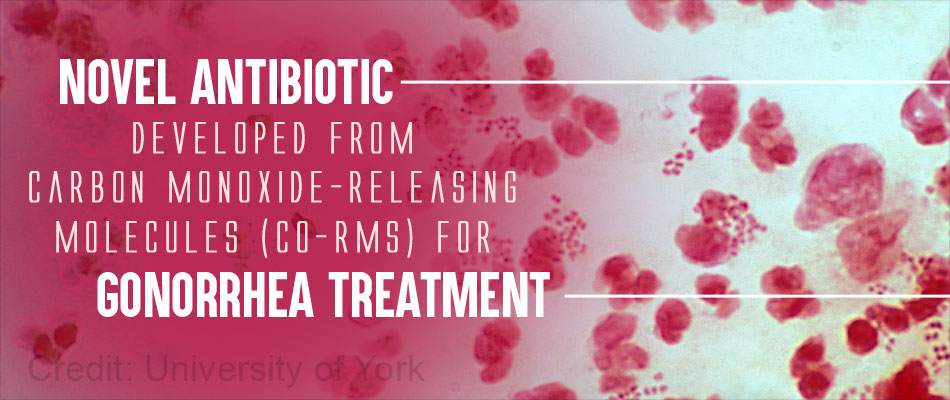
- Gonorrhea is a sexually transmitted disease that is common among young adults.
- New antibiotic using carbon monoxide-releasing molecules (CO-RMs) was developed for the treatment of gonorrhea.
- Carbon monoxide-releasing molecules were found to bind with the bacteria and prevent them from producing energy.
The research team targeted the ‘engine room’ of the bacteria by using carbon monoxide-releasing molecules.
There is an increasing evidence of carbon monoxide enhancing the antibiotic action for the treatment of bacterial infections. Carbon monoxide was found to bind with the bacteria and prevent them from producing energy.
Professor Ian Fairlamb, University's Department of Chemistry, said, "The carbon monoxide molecule targets the engine room, stopping the bacteria from respiring. Gonorrhea only has one enzyme that needs inhibiting and then it can't respire oxygen and it dies.”
"People will be well aware that CO is a toxic molecule but that is at high concentrations. Here we are using very low concentrations which we know the bacteria are sensitive to.”
The author also added that, the study is an important breakthrough and even though it isn’t a final drug we are pretty close to it. People may consider gonorrhea to be a vaginal bacterial infection, but are unaware of the certainly dangerous disease that is becoming resistant to antibiotics.
The research team also said that the next stage would involve is to develop the drug either in the form of a pill or a cream and results can be determined by future clinical trials.
Gonorrhea (Clap)
- Gonorrhea is a sexually transmitted disease that is more common among young adults. The bacteria is found to infect the genitals, anus and the mouth.
- Around 35,000 cases were recorded in England in 2014. Sexually active people are at a higher risk of gonorrheal infection.
- Gonorrheal infections are often asymptomatic, sometimes dysuria, vaginal discharge, urethral discharge may be noted.
- If left untreated, gonorrhea may increase the risk of HIV infections and may cause AIDS.
- Gonorrhea should be tested in pregnant women as they are capable of infecting the baby.
- Jonathan S. Ward, Rebecca Morgan, Jason M. Lynam, Ian J. S. Fairlamb, James W. B. Moir. Toxicity of tryptophan manganese(i) carbonyl (Trypto-CORM), against Neisseria gonorrhoeae. Med. Chem. Commun., 2017; DOI: 10.1039/c6md00603e
- Gonorrhea - CDC Fact Sheet (Detailed Version)
- (https://www.cdc.gov/std/gonorrhea/stdfact-gonorrhea-detailed.htm
- Gonorrhea - (https://medlineplus.gov/gonorrhea.html )
Source-Medindia













